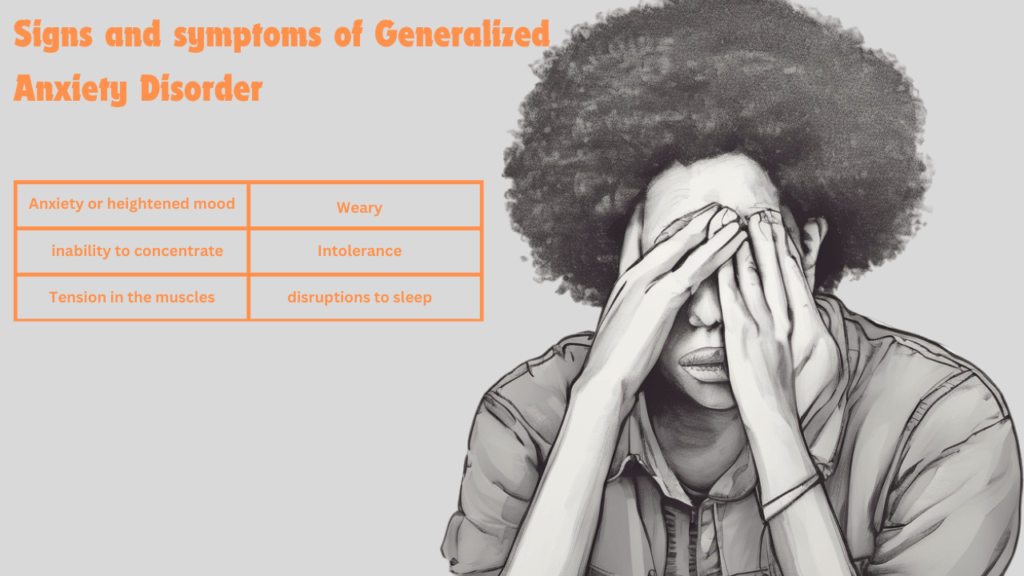A common mental health illness called generalized anxiety disorder (GAD) is characterized by excessive, unrelenting worry about a variety of everyday situations. Unlike specialized phobias or panic disorders, which usually have identifiable triggers, generalized anxiety disorder (GAD) is not limited to a single worry or experience. Rather, it permeates a person’s daily existence, potentially upsetting their personal, academic, and professional lives.
The National Institute of Mental Health (NIMH) estimates that 5.7% of adult Americans [1*] have had generalized anxiety disorder at some point in their life. Women are diagnosed with it more often than males since they are twice as vulnerable. It is acknowledged as a chronic illness that might last for many years or perhaps a lifetime, particularly in the absence of suitable therapy.
Signs and symptoms of Generalized Anxiety Disorder
Adults with generalized anxiety disorder may exhibit a range of psychological, emotional, and physical symptoms. The primary indicator is persistent and severe anxiety over many aspects of life, including work, health, family, finances, and education. The anxiety is usually greater than the actual likelihood or effects of the circumstance causing the fear.
In addition to mental symptoms, people with GAD may also have a range of physical ones, such as:
- Anxiety or heightened mood
- Weary
- inability to concentrate
- Intolerance
- Tension in the muscles
- disruptions to sleep

These symptoms must cause significant discomfort or interfere with everyday activities for a minimum of six months in order to be officially diagnosed as GAD.
Differentiating Between GAD and Other Mental Health Conditions
Given that the symptoms of generalized anxiety disorder might coincide with those of other mental health illnesses, diagnosing it can be challenging. This is a detailed comparison between generalized anxiety disorder (GAD), panic disorder, post-traumatic stress disorder, and other conditions.
Anxiety vs. GAD
Tension and concern are frequent characteristics of anxiety, which often arises in reaction to stimuli. Conversely, generalized anxiety disorder is a mental health illness characterized by persistent, excessive concern that interferes with day-to-day functioning. In contrast to typical stress-related anxiety, generalized anxiety disorder (GAD) does not go away and often centers on issues related to family, money, or health.
Anxiety vs Panic Disorder
Although major anxiety is a feature of both GAD and panic disorder, they are not the same. Anxiety that is episodic and manifests as abrupt panic episodes that are physically and emotionally distressing is known as panic disorder. In contrast, GAD is characterized by chronic, persistent anxiety that is accompanied by excessive concern over a wide range of life conditions.
PTSD vs. Generalized Anxiety Disorder (GAD)
Usually brought on by a terrible experience, post-traumatic stress disorder (PTSD) manifests as intense anxiety, nightmares, and flashbacks. In GAD, anxiety is often more sporadic and unrelated to a single incident, occurring in a variety of daily contexts.
OCD with Generalized Anxiety Disorder (GAD)
The hallmarks of OCD are a pattern of unrelenting, recurrent thoughts known as obsessions and compulsive, repetitive behaviors that follow the obsessions. While high levels of concern are shared by both OCD and GAD, OCD is characterized by intrusive thoughts and habitual actions, while generalized anxiety disorder is characterized by pervasive distress.




Comments